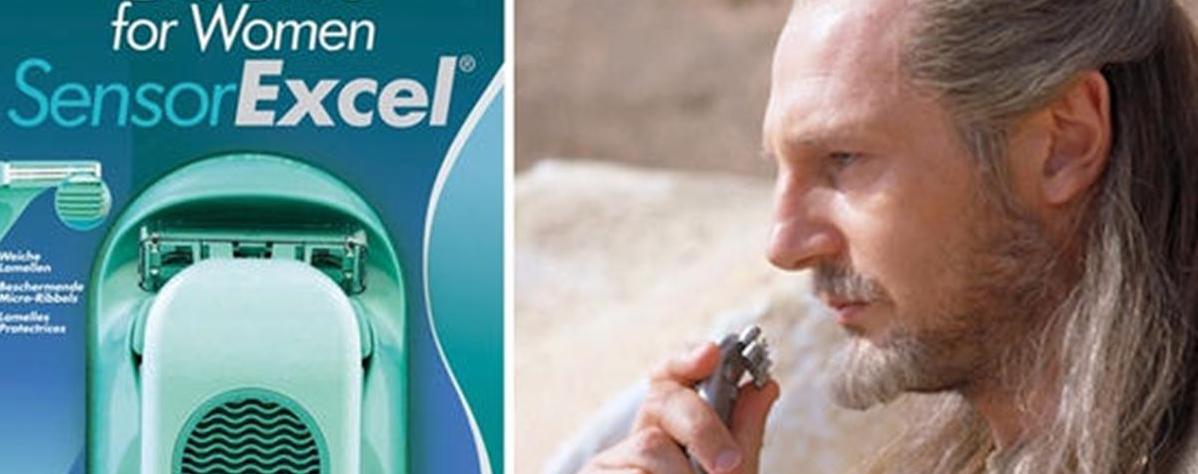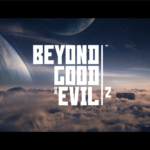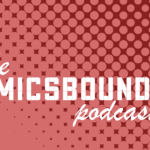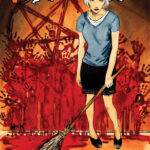I first encountered the visual language of Star Wars through a cardboard Darth Maul in a dollar store window. It was 1999. I was six years old. I had never seen Star Wars. But I knew one thing: that guy was super evil.
Soon I sat down to watch Star Wars Episode I: The Phantom Menace (1999). When the John Williams score hit and that first pair of lightsabers ignited, I became a fan for life.
Today marks the 20th anniversary of The Phantom Menace—one of the most iconic letdowns in cinematic history. But for my generation of Star Wars fans, this film was the first step into a larger world.
I collected the action figures. I bought the chunky CommTech Reader (modeled after the Gillette women’s razor prop used by Qui-Gon Jinn as a communication device) to play the ultra-compressed dialogue snippets on the chips that came with those action figures. I drank Pepsi from a Star Wars Pizza Hut cup, which of course had a plastic Sebulba topper.

But I didn’t know that, as I trick-or-treated in my Padawan costume complete with the requisite rattail braid, other fans revolted against the new Star Wars. They had waited for this moment nearly 20 years, ever since that baffling “EPISODE V” at the top of Empire Strikes Back. Now, some even demanded writer/director George Lucas give a public apology. I didn’t know they denounced Jar Jar Binks and Midichlorians with all the pre-social-media vitriol they could muster. I didn’t know Star Wars had birthed the toxic fandom that would bully 12-year-old Anakin actor Jake Lloyd out of a career and nearly drive Jar Jar actor Ahmed Best to suicide.
I didn’t know I wasn’t supposed to like The Phantom Menace.
If you know the Star Wars fan community, you know the usual criticisms: wooden dialogue, bizarre pacing, a lack of actor-direction, and, of course, the endless politics. But enough proverbial ink has been spilled over these points. To sum it up in the words of Han Solo: It’s true. All of it.
The film fails on multiple levels. Watching the film with a 20-year remove, I notice one failure in particular. In The Phantom Menace, the childhood and adulthood of Star Wars separate like oil and vinegar.
The original Star Wars Episode IV: A New Hope (1977) bottled the essence of a fairytale. A farm boy and a wizard leave home, storm a castle, rescue a princess, and defeat an evil empire. That’s it: the classic hero’s journey as outlined by Joseph Campbell. This mythic storytelling transcends age. Whether you’re six or 60, you want that farm boy to rescue that princess.
But The Phantom Menace never achieves this. No classic fairytale begins with “The taxation of trade routes is in dispute.” Where A New Hope unifies children and adults, The Phantom Menace alienates both. Kids love the Jar Jar antics and the fart jokes, but for OG fans from ’76, it felt like director George Lucas himself farting on their childhood. And the political premise, while intriguing for grown-ups where it works, baffles younger viewers.

Mixed with my childhood elation, I remember profound confusion. What’s a trade federation? How do the Jedi stroll aboard the bad guy’s ship without a fight? I understood A New Hope; when the bad guys showed up, they fought the good guys, and vice versa, end of story. Even a six-year-old could catch that visceral storytelling. But trade disputes? Votes of no confidence? I filed those terms in the “things I’ll understand when I grow up” folder of my brain (update: I still don’t entirely). When Darth Vader marched down a hallway of rebel corpses in A New Hope, I felt the stakes. But when Sio Bibble informed Queen Amidala that “the death toll is catastrophic,” he could’ve been speaking Huttese.
But I still loved it. And you know what? I still do. And now that the kids from 1999 are grown up and writing things, I know I’m not alone.
So how do us ’90s kids reconcile our love for such a mess of a movie? We could join the meme culture and enjoy it ironically. But if I did that, I would be scorning my childhood the same way older fans thought Lucas scorned theirs. I would have to disavow that little six-year-old me in the rattail braid.
Of course, it’s healthy to admit the film’s flaws. We should discern good storytelling from poor storytelling. But it’s also okay to celebrate the goodness in flawed things. It’s possibly even a more noble endeavor than sniffing out the flaws in good things (looking at you, Force Awakens haters).
The older I get, the more I notice the ways this movie doesn’t fail. We’ve all seen bad sci-fi flicks—the generic set pieces, the predictable structures, the requisite energy beam shooting skyward in the third act. They fail by settling for mediocrity. But The Phantom Menace fails while shooting for the stars.
Fans expected a straightforward installment of the Star Wars franchise. Instead, they received the mishmash passion project of an independent filmmaker. Lucas takes his political philosophy, his Flash Gordon nostalgia, his love of racing, and his urge to advance film technology and combines them into one film. He crafts his own tone, his own pace, his own aesthetic. For all its flaws, it feels like nothing else. Lucas fails as only an auteur could fail.
Glimmers of greatness eek through the shortfalls. It plays oddly like Marvel’s The Star Wars, an illustrated adaptation of Lucas’s rough draft for A New Hope. They feature the same breakneck pacing, the same exposition-clogged dialogue, the same political pontifications. But The Star Wars went through several drafts—and the input of multiple others—before becoming the film we love. One can only imagine what The Phantom Menace could have been with more time and more input.



